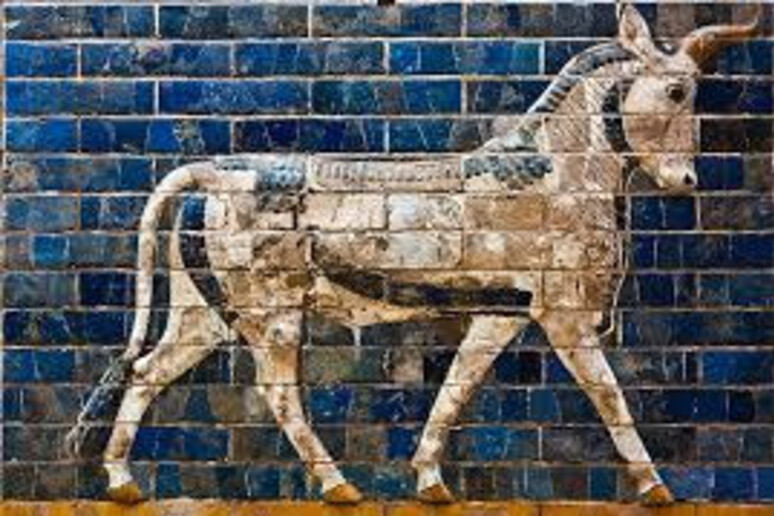A large structure believed to
have inspired the Ishtar Gate of Babylon and a settlement dating
from 2300-1700 BC are among discoveries revealed this week by
Italian archaeological missions in Iran at an international
archaeological conference in Tehran.
The architectural structure resembling the Babylonian gate
was found in the site of Tol-e-Ajori, near the ancient site of
Persepolis, an ancient Persian ceremonial capital in
southwestern Iran dating back to 500-330 BC.
The settlement Chalow Tepe in the northeastern region of
Khorasan is part of the Oxus civilization, or Bronze Age
civilization of Central Asia, that covered parts of modern
Afghanistan, Turkmenistan, Uzbekistan and Tajikistan.
Italian archeologists are nearly alone in carrying out
excavations in partnership with Iran, with missions that are
co-financed by both countries.
The timing of the conference drew attention to international
archaeological efforts in the region after ISIS militants
destroyed exhibits in the Mosul museum, wrecked the ancient city
of Nimrud and the Hatra emporium in nearby Iraq. In response,
Iran wrote to UNESCO offering to host ancient Iraqi treasures at
risk until ISIS is defeated.
Italy has always maintained good archeological relations
with Iran dating back to when diplomatic relations were launched
at the end of the 1950s and then interrupted for nearly 20 years
after the Islamic revolution of 1979. Relations were picked up
once more in the 1990s thanks to the reformist president
Mohammad Khatami, who reopened relations toward foreign
countries.
Italian-Iranian relations continued in recent years despite
the tightening of sanctions against Iran surrounding nuclear
issues. While sanctions created difficulties for French and
British archeological missions, the Italian archeologists were
unaffected because their bilateral funding remained unaffected
by the measures.
Seven or eight Italian-Iranian missions are currently at
work, with the universities of Turin, Bologna, Naples and Rome's
Sapienza involved.
The excavations near Persepolis are under the care of
Pierfrancesco Callieri of the University of Bologna and his
Iranian colleague Alireza Askari Chaverdi. They have found a
brick monument with a glazed facade similar to structures found
from Babylonia. Part of it is decorated in relief with imaginary
animals, like a dragon-snake and bull, resembling those on the
Ishtar Gate, built 50 years before the Persian conquest.
The University of Turin, meanwhile, is involved in
excavations in the southwestern Iranian region of Khuzestan,
where a stone temple and a monumental sanctuary from the
Hellenistic and Parthian periods were found. The bronze statue
of the so-called Prince of Shami, found on the sites, is now in
the Tehran National Museum.
ALL RIGHTS RESERVED © Copyright ANSA











